In part 4 of this series on squats, I focus on body weight again, setting up lower-body conditioning routines you can do at home, outside in the park, or in the hotel when you’re on the road. These are some of my favorite go-to workouts when I’m on the road or don’t have time to get in a quick leg workout. As I have reiterated throughout this blog series (part 1, part 2, and part 3), regardless of your fitness goals, you can and should add some form or fashion of squats to your fitness routines.
A Quick Workout: AMRAP Challenge
This video is a 6-minute lower-body AMRAP challenge. Your goal is to follow the routine and complete the series for as many rounds as possible (AMRAP) in the 6 minutes. Keep in mind, if you’re a beginner, start with less time (start with 4 minutes) or fewer reps of the combination. I love doing this quick workout when time is limited and I need to get in a quick lower-body workout.
Follow order:
- Reverse Lunge
- BW Squat
- Reverse Lunge
- BW Squat
- Box Jump
- BW Squat (on Box)
- Step-down
- BW Squat
A Tougher Lower-body Workout
When I’m on the road but do have time to get a tough lower-body workout completed, I like completing the following six series combined for a workout. Start with the first video and work your way through all six challenges. This has a variety of work to be completed, from EMOMs (Every Minute on the Minute) to Ladders (x1–10 Reps). Again, keep in mind, if you’re a beginner, start with less time, fewer reps, or a combination of the six challenges. As you advance, add more time or complete more than one challenge together if time allows. Also, if time is short, just like the 6-minute lower body challenge, complete one of the challenges instead of all six.
CHALLENGE 1: 10 minutes EMOM (Every Minute on the Minute) x15 Bodyweight Squats
CHALLENGE 2: 3 rounds x15 R/L—Rear Foot Elevated Split Squats
CHALLENGE 3: 5 rounds x5 Reps—Squat Jumps w/Floor Taps
CHALLENGE 4: x10min EMOM (Every Minute on the Minute) x10 Single-leg Bridges (R/L)
CHALLENGE 5: Burpee Ladder x1–10 x1 Rep x2 Reps x3 Reps... x8 Reps x9 Reps x10 Reps—Finished
CHALLENGE 6: Alternating Split Squat Lunge Jumps—Ladder x1–10 x1 Rep x2 Reps x3 Reps... x8 Reps x9 Reps x10 Reps—Finished
Get “King of the Gym” Results Outside the Gym
Whether you’re taking a break from heavy back squats or just need variety, or possibly you’re on the road traveling, you have ways to focus on your lower-body strength without a barbell and rack. Throughout the four posts in this series, Instead of adding more weight to your back squats, you’re changing up the exercises to make it more difficult and challenging. Your squats can progress in a similar way if you’re not barbell back squatting: You can start by doing air squats with both legs, then progress to split squats, and eventually one-legged pistol squats, which are a lot more challenging. On the road, focus on body weight again and set-up lower-body conditioning routines.
As I have reiterated in each of the preceding posts, regardless of your fitness goals, some form or fashion of squats can and should be added to your fitness routines. The end result for your lower body is similar to what you can get from working out with “king of the gym” back squats.
This blog was written by Michael Blume, MS, SCCC; Athletic Performance Coach. To learn more about the NIFS bloggers, click here.


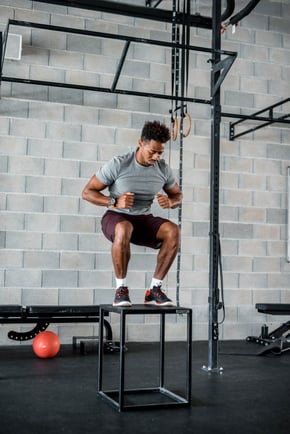 When watching elite athletes during competition, there are many athletic traits and features that we novices or amateurs marvel at. We think to ourselves, “If I did something like that, I wouldn’t walk for a week!” Seeing an NFL running back or wide receiver make a cut at full speed, a baseball player hitting a 400-foot home run, or a powerlifter deadlifting the weight of a Volkswagen Beetle are feats that just leave you in awe.
When watching elite athletes during competition, there are many athletic traits and features that we novices or amateurs marvel at. We think to ourselves, “If I did something like that, I wouldn’t walk for a week!” Seeing an NFL running back or wide receiver make a cut at full speed, a baseball player hitting a 400-foot home run, or a powerlifter deadlifting the weight of a Volkswagen Beetle are feats that just leave you in awe. 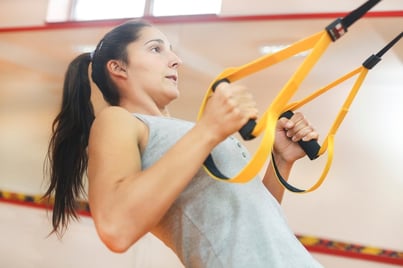 Have you tried TRX class at NIFS? For starters, you may be asking yourself, “What is a trx?” TRX is a body-weight suspension training system designed to give you a total-body workout, while playing to your skill set and allowing for nearly limitless body-weight–oriented exercise. TRX can provide a fitness beginner with an opportunity to learn movement patterns properly as well as challenge the most seasoned veterans in the gym with more advanced progressions.
Have you tried TRX class at NIFS? For starters, you may be asking yourself, “What is a trx?” TRX is a body-weight suspension training system designed to give you a total-body workout, while playing to your skill set and allowing for nearly limitless body-weight–oriented exercise. TRX can provide a fitness beginner with an opportunity to learn movement patterns properly as well as challenge the most seasoned veterans in the gym with more advanced progressions.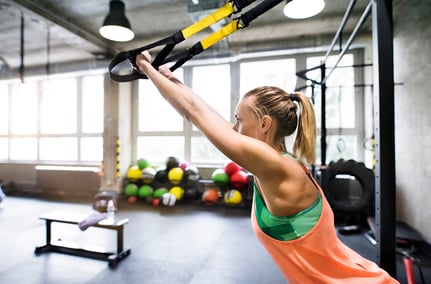 TRX Row: With two handles set to the short length (one tick mark), start with arms long and body in a plank position, being mindful that you do not let your hips sag. While under control, pull yourself up to your hands. Lower back down under control. PRO TIP: You can pull with your hands parallel to the floor to engage the lats more, whereas pulling with your hands horizontal to the floor works the rear deltoids and trapezius. (See video
TRX Row: With two handles set to the short length (one tick mark), start with arms long and body in a plank position, being mindful that you do not let your hips sag. While under control, pull yourself up to your hands. Lower back down under control. PRO TIP: You can pull with your hands parallel to the floor to engage the lats more, whereas pulling with your hands horizontal to the floor works the rear deltoids and trapezius. (See video 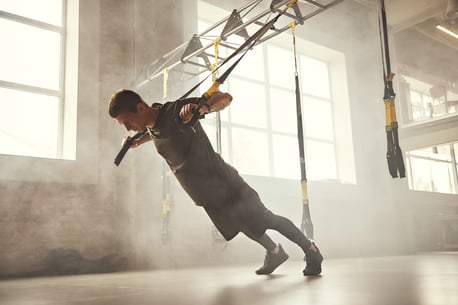 Starting from the ground up might sound like a daunting task, but with
Starting from the ground up might sound like a daunting task, but with 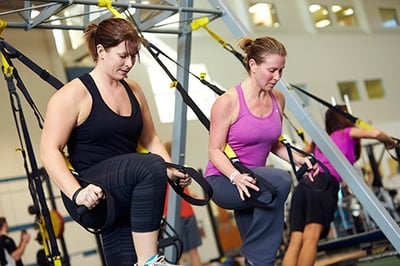 You may have been around the gym environment when TRX training came about and wondered what the benefit of using those straps could be. I remember hitting the weight room in college and thinking, “What on earth are those? And how could I possibly get as good of a workout with them as I do with lifting?” After spending only about 20 minutes on them, I quickly learned how suspension training using body weight could really build strength and challenge the entire body, no matter the movement!
You may have been around the gym environment when TRX training came about and wondered what the benefit of using those straps could be. I remember hitting the weight room in college and thinking, “What on earth are those? And how could I possibly get as good of a workout with them as I do with lifting?” After spending only about 20 minutes on them, I quickly learned how suspension training using body weight could really build strength and challenge the entire body, no matter the movement!